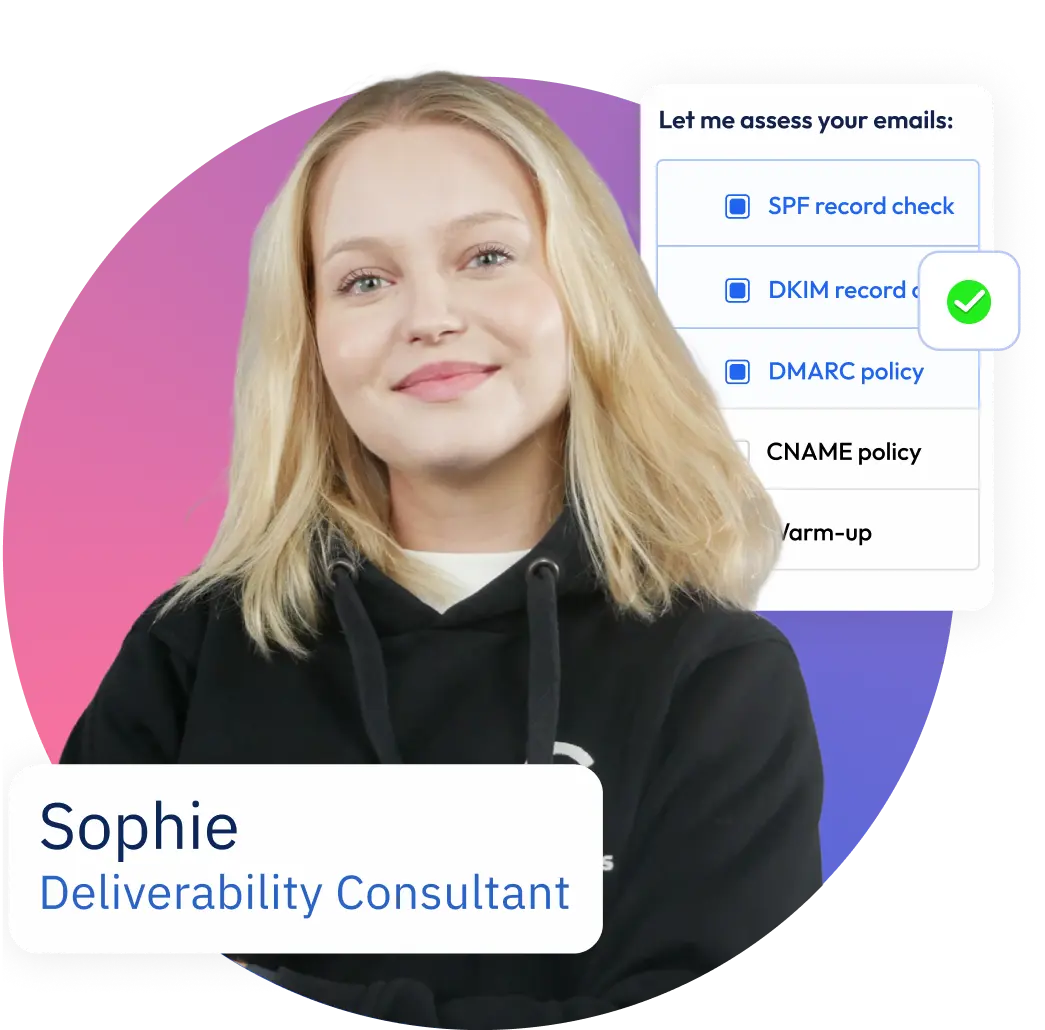Should I pursue an inbound or outbound marketing strategy?
Have you ever asked this question? Your business depends on getting leads to convert into sales and you have limited resources with which to do it.
I am in a unique position to answer this question as I work on inbound strategy for a company whose solution helps other companies maximize the effectiveness of their outbound marketing strategies. How does that work?
I’ll let you in on a little secret. There isn’t a single answer. Every business has different resources and needs. Inbound might be great for one business and outbound might be great for another. That said I believe that the combined use of both inbound and outbound marketing strategies will deliver the best results for most businesses.
The benefits of using an outbound marketing strategy

An outbound marketing strategy is for those who want, to quote Aaron Ross outbound guru, predictable revenue. An outbound marketing strategy has a few discernible benefits:
- You start talking to clients immediately
- Email automation helps it scale
- Your company will see predictable growth
One of the hardest things about starting a business is uncertainty. Will people buy my product? Will I have enough funding to keep going? Can I deliver on my promises?
It’s up to you to deliver on your promises but an outbound marketing strategy can answer those first two questions.
The beauty of an outbound marketing strategy is that you have a sense of control over what you are doing. You still need to persuade people to buy your solution but you are the one who is seeking them out, not the other way around.
The first step
The first step in identifying your customers is creating an ideal customer profile. You can target the exact people who could most benefit from your product and would be most likely to buy from you, with your ICP. More importantly, you can start talking with them immediately. It beats waiting for your customers to find you. That sounds pretty tempting, right?
And that’s not even the best part. It can be done entirely through email. Why is that a benefit you ask?
- Because emails can be automated and scaled.
- An email has a better chance of getting past gatekeepers, going directly to the decision maker you want to connect with.
- Depending on the tool you use, you can spend as little as five minutes a day sending out your drip campaign, compared with the hours you would need to spend calling up leads individually, only to get denied by their secretary.
So what is the result of all of this?
When done correctly, you can see predictable growth. This means that you can generally gauge your conversion rate by the number of people you have employed to do lead qualification and close deals. This all sound pretty good right?
Challenges with an outbound marketing strategy
Well, there are some challenges to consider when employing an outbound marketing strategy.
- Costs rise in a linear fashion
- You need high-quality prospects
Outbound does scale! Still, one person can only qualify so many leads at a time. Therefore your prospects will only grow as long as you are spending more man-hours qualifying leads.
The other big sticking point is the quality of the leads that you get. There is a lot of lead generation data out there from multiple sources. It can be a lot to sift through. The best strategy is to buy high-quality data which is up to date, as the value makes up for the extra time you need to qualify bad leads. Of course, this can cost more so you need to be prepared to shoulder this burden. Luckily there are some great tools out there to automate the process like Growbots. They provide up to date data and integrated emailing tools. So is there a way of ensuring that I get good leads which grow in an exponential fashion? There is, it’s called…
An inbound marketing strategy

The fact that you are reading this shows that the first stages of our inbound strategy have worked. It has a few main benefits.
- Growth is exponential
- It doesn’t require a huge team
- You get very high-quality leads
You can start inbound from your first day. The difference is the amount of patience required. It usually takes half a year to really get going. If you do it right, you get showered by good leads. So how does inbound work?
A good mantra for inbound is the same one that my grandmother had for persuading people to do things, “You catch more flies with honey than you do with vinegar.” Now you may be asking, what does inbound marketing have to do with my grandmother wanting me to smile more often?
Think about it. When you smile more, people want to spend more time with you. You develop a reputation as a likable and engaging person. You will be somebody people will want to listen to and spend time with.
In the same way, inbound relies on content that people like and find engaging.
Good content
With good content,
- You show that you have mastery of the field that you operate in.
- Your customers will be more likely to see if your product would be a good solution for them
- Your customers will come directly to you, unlike with outbound.
Therefore a lead generated through an inbound marketing strategy will already have some knowledge of your product and will have signaled an intent to buy. So does it require a ton of people to pull this off?
The great thing about inbound is that it only requires an individual or a small team.
As they create more content, more becomes available to draw in customers. If done correctly, the popularity of your content will increase. With a good SEO strategy, your content crawling up search rankings leads to a self-perpetuating pattern of more clicks and higher rankings. This pattern leads to exponential growth without having to grow your team exponentially. Sounds great. Why would you use any other strategy? There are a few…
Challenges with an inbound marketing strategy
While the rewards can be great there are some things you need to watch out for:
- It takes a long time to see results
- It requires a more skill to reach the desired outcome
- The outcomes are less predictable
The biggest thing going against inbound is the amount of time you need to wait before you see any results. You need to make a larger upfront investment and then be prepared to wait for it to pay off.
Additionally, you need to be prepared to either spend time developing the skill set or hire someone who has it already. There is a skill set to develop with outbound as well but it is generally a bit easier to bring to a functional level.
After all that, the rate of growth is less predictable than with outbound. You can’t be certain that a piece of content will convert in the way you want it to for a while after it’s published. So which one should you choose?
Find a balance

It is best to employ a balanced inbound and outbound marketing strategy. There are some businesses which might work best employing exclusively outbound or inbound.
- If you want to start growing immediately and don’t mind hiring people to qualify your leads or using a service like Growbots, outbound is a great option.
- If you want to keep your overheads low and are willing to wait a while for your content to start paying dividends, then inbound is great for you.
Most companies that I have come in contact with fall somewhere in between. They have found it is best to use both strategies to create cost effective scalable and sustainable growth.
So how can you get these two opposing ideas to work together? It isn’t that difficult. They are two methods for achieving the same end. What is that end?
Producing qualified leads.
Let’s say you are the CEO of a startup and have just released your product. Congratulations! Let’s get you some leads to sell to. You have probably already been personally glad-handing personal contacts and people you meet at conferences. It has probably worked so far but it doesn’t scale that well. Now it’s time to establish sustainable growth.
Three things you need to do first
- Create an ideal customer profile
- Establish a blog
- Start scraping the web for leads or start going through Growbots’ database.
Your ideal customer profile is the person who you are going to be writing your blog and your drip campaigns to. It is very important for setting the tone for the rest of your communications so better get this one right.
Once you are done with that, start writing for your blog. Think about the topics that your customers are interested in.
Don’t use it as an advertising circular. Think of it instead as a conversation with your customers. If your conversation is good enough, they will want to learn more about you. Don’t forget to keep SEO in mind while you do it. Try to publish regularly, say at least once a week. If you can do more than that, even better!
Now don’t expect your blog to get you very far initially. You are investing in more click-throughs later on.
Think of your blog like a savings account. Each blog post is a deposit and click-throughs are compounding interest. As each post gets more click-throughs, your search ranking will go up. With higher search rankings, your click-throughs will get even higher.
Start prospecting for leads
When you are not writing your weekly blog post, you can start prospecting for leads. This process will take more time than your blog post. You should focus your efforts here because lead prospecting will be more important for creating revenue in the short term.
As soon as you start generating targeted leads, it is time to start putting together drip campaigns. Through these, you will be able to test your message by reaching out directly to your potential clients. You should start seeing results after about of month, which should turn into a predictable revenue stream.
As you make more money hire more people to prospect, all while you are writing the blog. It might even be possible to hire an additional content creator but your priority should be people to work on your outbound funnel.
Now let’s fast forward six months

If you put together your blog right, you are now generating strong leads from your inbound funnel which complement the steady stream from your outbound funnel. Inbound can take a few tries though so maybe you are still relying on your outbound funnel to keep your account executives busy. The beauty of combining both methods is that you never lose your revenue stream while you figure out inbound. Once you have both, you can use them together to continually sustain growth.
So how do I proceed?
- Evaluate your needs and decide on whether you are going to pick one strategy or go for a mixed strategy
- Create your ideal customer profile
- Start prospecting, blogging, or both
- Evaluate how things are going. Optimize the strategies that are working and experiment with new ideas with the strategies that aren’t
If you choose to go for an inbound marketing strategy, you can look for a blog platform here. If you choose to go for an outbound marketing strategy, you can do yourself but be aware that Growbots is a cost effective way to automate the process. Doing it manually may take you a day to prospect 200 leads and send out messages to all of them. The cool thing about Growbots is that you are able to go from prospecting to starting your drip campaign in as little as five minutes.
You can get started by reading about how to prospect, write the first email of your campaign, and write the follow-up emails as well. For those who want to supercharge their outbound marketing strategy by automating it, check out Growbots.























